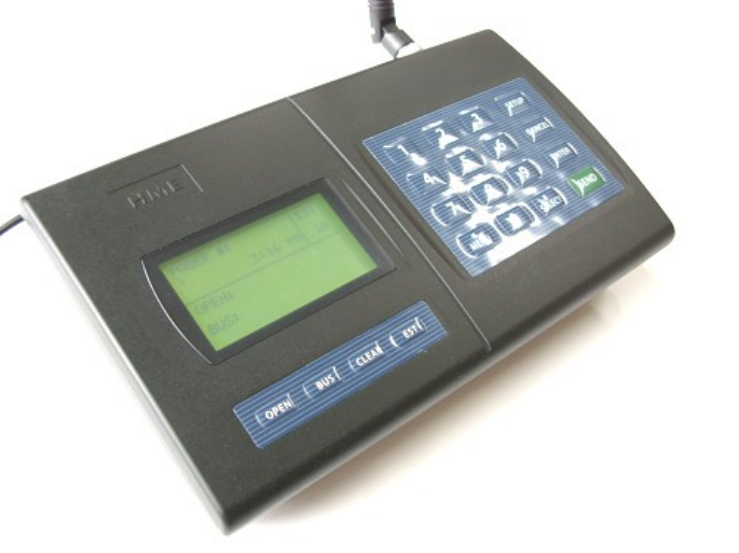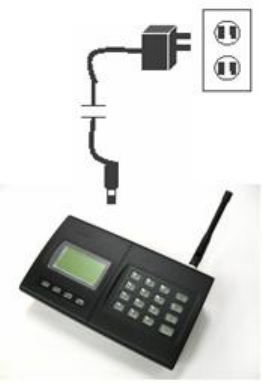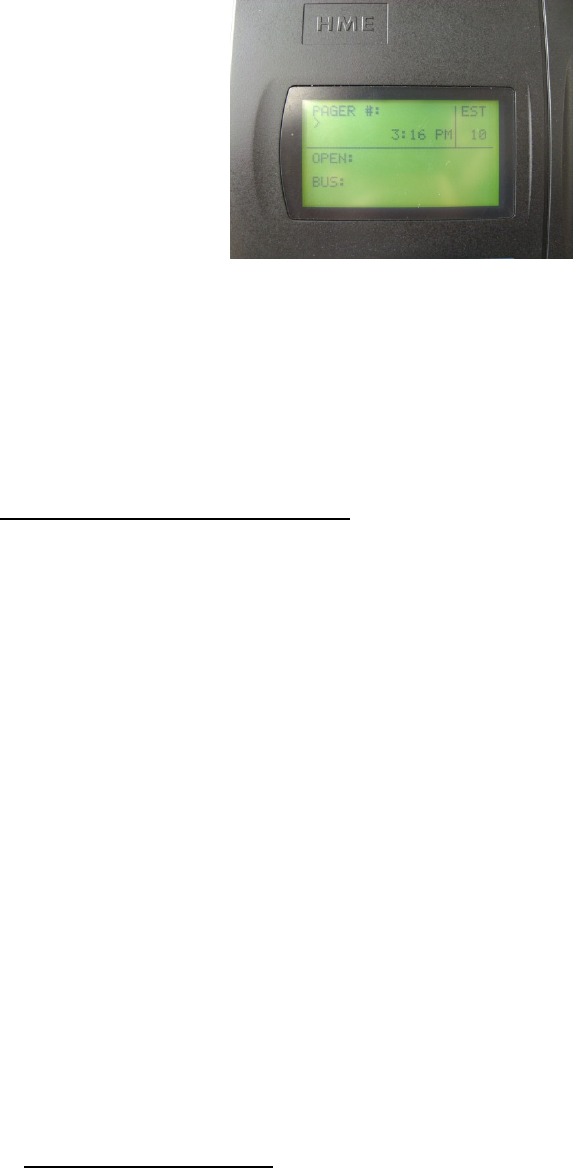JTECH an HME IQBASE-N IQ TRANSMITTER User Manual IQBASE N MANUAL
HME WIRELESS, INC. IQ TRANSMITTER IQBASE N MANUAL
Contents
- 1. Users Manual
- 2. User Manual - revised
- 3. User Manual
Users Manual

IQBASE-N
INSTRUCTION MANUAL
Model No. : IQBASE-N
THIS DEVICE COMPLIES WITH PART 15 OF THE FCC RULES.
OPERATION IS SUBJECT TO THE FOLLOWING TWO CONDITIONS :
(1) THIS DEVICE MAY NOT CAUSE HARMFUL INTERFERENCE, AND
(2) THIS DEVICE MUST ACCEPT ANY INTERFERENCE RECEIVED,
INCLUDING INTERFERENCE THAT MAY CAUSE UNDESIRED OPERATION.
IQ TRANSCEIVER INSTRUCTION MANUAL
NOTE: THE MANUFACTURER IS NOT RESPONSIBLE FOR ANY RADIO OR TV
INTERFERENCE CAUSED BY UNAUTHORIZED MODIFICATIONS TO THIS

EQUIPMENT. SUCH MODIFICATIONS COULD VOID THE USER�S AUTHORITY
TO OPERATE THE EQUIPMENT.
Thank you for purchasing our brand-new “IQ Paging System”
We are confident our cutting edge products and first rate service will satisfy your needs
for years to come. Please read these instructions carefully before setting up your IQ
Paging System!
1. Equipment Setup
1) Keypad Sending Unit
Unwrap all sending unit components. Lock the antenna into the hole in the upper
right hand corner of the sending unit. Plug the power supply with the large tip into a
standard 110 outlet and plug into the back of the sending unit. We recommend
some type of surge suppressor on the power supply for protection. Power surges are
not covered under system warranty.
2) Initial Display

2. Placement & Mounting Instructions
1) DESKTOP
You can use your transmitter with the 20 degree wedge attached or remove the
wedge and lay the transmitter flat.
2) WALL MOUNT
To mount your transmitter on a wall
Remove the plastic bracket (included) under the transmitter unit by
unlocking the 2 latches
Place the plastic bracket against the wall and with the aid of a pencil, mark
the position of the mounting holes. (Refer to figure below) Mount the
transmitter in a convenient location where a power outlet is available.
Drill a hole on the market position. Install the 3 mounting screws (and use
anchors where necessary) Ensure that the screws are not fully tightened so
that the unit can be easily removed from the wall.
Place the transmitter onto the wall (without the plastic bracket) Plug the 2-
amp wall transformer into any suitable AC outlet. Plug the power connector
into the power jack on the top left hand side of the unit. Transmitter is now
ready for use. Be certain to mount the transmitter away from phones, heat,
moisture and exposed power circuits. These items can damage your system
and shorten transmission range.
3) SYSTEM CONFIGURATION
Your system was set at the factory and will function as soon as it is powered up.
Default setup is as below:
Current time
Sleep shutdown - OFF
Range Test - OFF

Default Alert Type - Vibe only
Duty Alert - OFF
Out of Range – OFF
Baud Rate – 1200 BPS
Transmission Frequency - 11 kinds selectable
Reception Frequency - 457.5750 MHz fixed
3. System Programming (Transmitter Version 1.01A)
To enter programming mode, press the “SETUP” button and enter the password
“2580” followed by “ENTER” If the password is accepted, the display will show “use *
to scroll to menu options”
1) Set Current Time
At the “Set Current Time” menu, set the hour then press “ENTER” key.
Set the minutes and press “ENTER” key.
Use the “#” key to select AM or PM
After the time is set, press the “ENTER”, and “Time Saved” will show on
display. If the time is not correct, press the “CANCEL” key twice to exit the
system programming menu.
2) Set Sleep Shutdown Time (Factory Default: OFF)
This system has an “ALL SLEEP” function that turns off all battery pagers at once
automatically.
To turn this feature off
Press “#” key to turn the sleep shutdown “OFF”
Press “ENTER” to go back to the main menu.
To change the shutdown time
Press “#” key to turn the sleep shutdown “ON”
Set the hour then press “ENTER” key.
Set the minutes and press “ENTER” key.
Use “#” key to select AM or PM.
After the time is set, press the “ENTER”, and “Time Saved” will show on
display. If the time is not correct, press the “CANCEL” key twice to exit the
system programming menu,
3) Range Test (Factory Default: OFF)
With this feature, you can determine what distance your transmitter will cover.
Remove a couple of pagers from the charger base.
At the range test menu, press “#” key to turn range test “ON”
Press “ENTER” to start the range test. As soon as range test is activated,
you’ll notice the IQ pagers flash once every 10 seconds. Walk around your
property. When you reach the point where the pagers do not flash
consistently, this is your maximum range. We can walk you through changing
the power level of your transmitter.
Press the “CANCEL” key to stop the range test. Press the “CANCEL” key again
to exit the system programming menu.
4) Button Select (Factory Default: Function)
With this feature, you can select button function type.
(1) Open Table
If “Open Table” is set, “OPEN”, “BUS”, “CLEAR” and “EST” keys are available.
- OPEN, BUS, CLEAR: These buttons will display Table Status.
- EST: This button will setup Estimated Waiting Time.
(2) Preset Message
①Beep
If “Beep” is set on, 4 buttons are recognized as “F1”, “F2”, “F3” and “F4” buttons
instead of OPEN, BUS, CLEAR and EST buttons and the buttons will be functioned
as Predefined Messages
②Num Code
If “Number Code” is set on, 4 buttons are recognized as, for example, “11”, “22”,

“33” and “44” buttons instead of OPEN, BUS, CLEAR and EST buttons and the
buttons will be functioned as Predefined Messages
(3) Manager Pager
If “Manager Pager” is set on, 4 buttons are recognized as shortcuts of “Manager
No# 1”, “Manager No#2”, “Manager No#3” and “Manager No#4” buttons instead
of OPEN, BUS, CLEAR and EST buttons and the buttons will be functioned as
Predefined Messages
5) Set Pager Alert (Factory Default: Vibe Only)
With this feature, you have the option of changing the way your pagers alert the
guest.
Be sure that all pagers are returned before performing this procedure.
To change the alert mode of your pagers follow these instructions
Remove all the pagers from the charger base or unplug the power supply
that is connected to the charger bases.
At the “Set Pager Alert” menu, press the “#” key to scroll through the
different alert options.
After making a selection, press the “ENTER” key 3 times. After sending the
code, the pagers will now respond with your new selection.
Press “CANCEL” key to exit the system programming menu.
Return all the pagers to the charger base or plug the power supply. The
pagers are ready to receive the page with the new alert.
6) Duty Alert (Factory Default: OFF)
This feature enables your transmitter to send a page, at a preset time, to a certain
pager to remind them of a duty required of them. For example, a buzzer can receive
a page every 60 minutes to remind him to check the restrooms.
You can assign up to 3 different pagers to be duty alert pagers.
Programming the duty alert
At the “Duty Alert” menu, “Duty Pager(1-3) is displayed and you can select
Duty Pager # among up to 3.
Select Duty Pager # using “#” key and press “ENTER” key.
If you choose Duty Pager #1, then “Duty Pager #1: OFF” is displayed.
You can select ON/OFF using “#” key and then press “ENTER” key.
You can setup Duty Pager #2 and #3 as same way as Duty Pager #1

7) Out of Range (Factory Default: OFF)
With this feature, the pager will play a melody when taken out of range of the
transmitter to inform the guest that they are out of range and will miss their page.
The melody will only stop when they return back within range.
Setting up the Out of Range “ON”
At the “Out of Range” menu, “OUT OF RANGE:” is displayed and you can
select ON/OFF using “#” key.
Make it “ON” and then press “ENTER” key.
“Are All Pagers Returned??” is displayed and then press “ENTER” key.
“Unplug All Coasters” is displayed and then press “ENTER” key.
“Message Sent Plug In Pagers” is displayed and transmit message twice.
Cf) Out of Range ON (Message 9494), Out of Range OFF (Message 9393)
8) Set DEFAULT MSG
With this feature, you can setup the default message.
Setting up the DEFAULT MSG
At the “Set DEFAULT MSG” menu, “TX DEFAULT MSG:” is displayed and you
can select ON/OFF using “#” key.
Input Default message and then press “ENTER” key.
9) Set EST Time
With this feature, you can setup the initial EST Time and also modifying EST Time.
Setting the EST Start Time
At the “Set EST Time” menu, input the initial EST Time among 000-200
minutes and then press “ENTER” key.
Setting the EST Add Time
With this feature, you can setup the EST incremental time which is increased
whenever press the “EST” key to increase the EST Time on the transmitter.
At the “EST Add Time” menu, input the EST incremental time among 000-
200 minutes and then press “ENTER” key.

Note. After setting the initial EST Time, you can enter into the “EST Add Time”
Auto Decrease EST Time
Every time you page the pagers, the EST Time will be decreased as much as
the EST incremental time.
10) SET Base ID
With this feature, you can setup the Base ID of each transmitter.
Setting the Base ID
At the “SET Base ID” menu, “SYSTEM BASE ID:” is displayed.
Input the Base Id and then press “ENTER” key.
11) GROUP CALL ID
With this feature, you can setup the GROUP CALL ID.
Setting the Group Call ID
At the “GROUP CALL ID” menu, “GROUP CALL ID(1-2):” is displayed and you
can select among 1-2.
If you want to input Group ID #1, press “1+ENTER” and then “Set Group ID
#1” is displayed.
Input Group Call ID #1 and then press “ENTER” key.
Group ID #2 can be set as same way as Group ID #2.
12) OUT OF RANGE ID
With this feature, you can setup Out of Range ID.
Setting Out of Range ID
At the “OUT OF RANGE ID” menu, “Set Out of Range ID:” is displayed.
Input out of range ID and then press “ENTER” key.
13) SET BAUD RATE
With this feature, you can setup the baud rate you want.

Setting Baud Rate
At the “SET BAUD RATE” menu, you can select the baud rage using “#” key.
Baud Rate List
(1) 512 BPS
(2) 1200 BPS
14) SET FREQUENCY
With this feature, you can select the frequency you want.
Setting Frequency
At the “SET FREQUENCY” menu, you can select the frequency using “#” key.
Frequency List
(1) 450.0250 MHz
(2) 450.3750 MHz
(3) 457.5750 MHz
(4) 458.6625 MHz
(5) 461.2625 MHz
(6) 461.4750 MHz
(7) 462.5750 MHz
(8) 463.6375 MHz
(9) 469.9750 MHz
4. How to Use
1) Page
(1) “Pager #” + “SEND”
- If the Default Msg is ON, preset default message will be sent.
- If the Default Msg is OFF, No Message will be sent.
(2) “Pager #” + “ENTER” + Numeric Message + “ENTER(SEND)”
- It’ll send numeric message to the pagers.
2) OPEN / BUS / CLEAR Button (This can be activated when “Button Select” is turned
to “Function”)
(1) OPEN / BUS
Press “Table #” and then press “OPEN(BUS)”
The data of table # will be transmitted and the Table # will be displayed onto
the “OPEN / BUS” setion
※Max 9 Table # can be displayed onto the each section and Max 19 Table # can
be stored.
※When the number of received Table # is over 9, you can scroll the table # by
pressing “OPEN” button shortly.
※To remove the list of “OPEN” or “BUS”, press and hold the “OPEN” or “BUS”
button for more than 4 seconds.
(2) CLEAR
Press “Table #” and then press “CLEAR”
The data of Table # will be transmitted and remove the corresponding table
# on the both section, OPEN/BUS.
※To remove the all the lists of “OPEN” and “BUS”, press and hold the “CLEAR”
for more than 6 seconds.
(3) EST
Every time you press the “EST” key, the EST incremental time will be added
to the current EST time.
LEE TECHNOLOGY KOREA CO., LTD
FCC ID: WDCIQBASEN
This device complies with part 15 of the FCC Rules. Operation is subject to the following two conditions:
(1) This device may not cause harmful interference, and (2) this device must accept any interference received,
including interference that may cause undesired operation.
Any changes or modifications (including the antennas) made to this device that are not expressly approved
by the manufacturer may void the user's authority to operate the equipment.
IC : 7752AIQBASEN
Operation is subject to the following two conditions:
(1) this device may not cause interference, and (2) this device must accept any
interference, including interference that may cause undesired operation of the device.
L'exploitation est autorisée aux deux conditions suivantes : (1) l'appareil ne doit pas produire
de brouillage, et (2) l'utilisateur de l'appareil doit accepter tout brouillage radioélectrique subi, même si le
brouillage est susceptible d'en compromettre le fonctionnement.